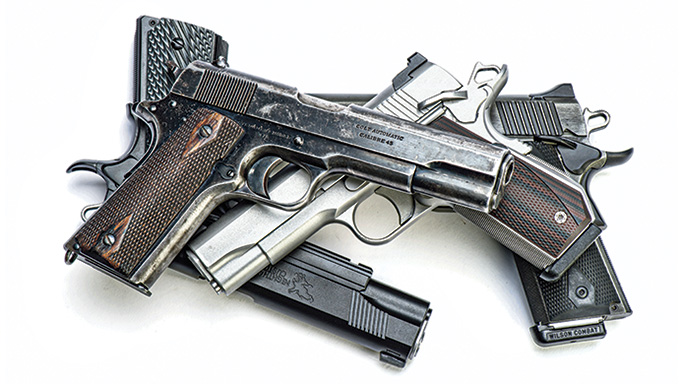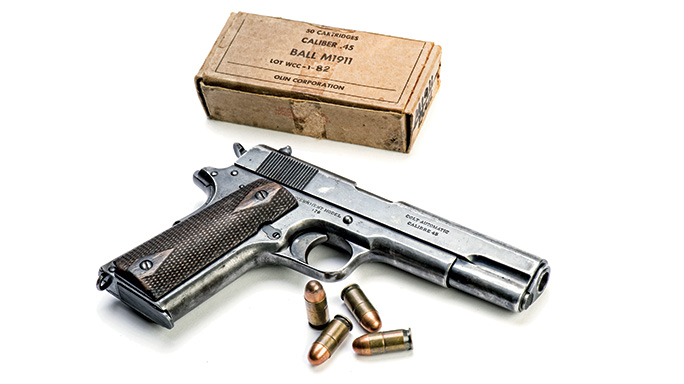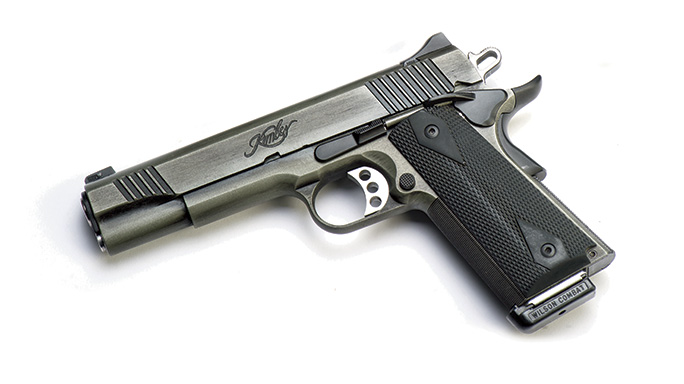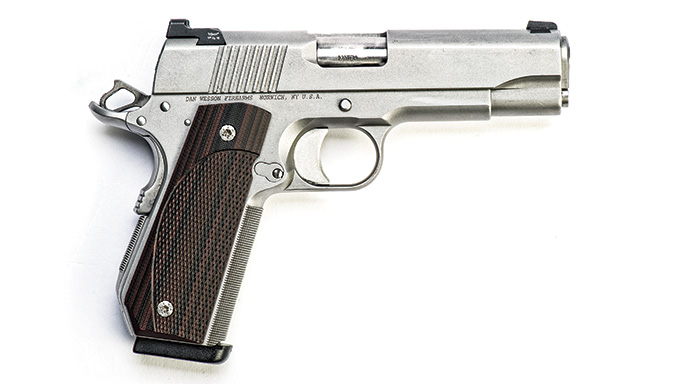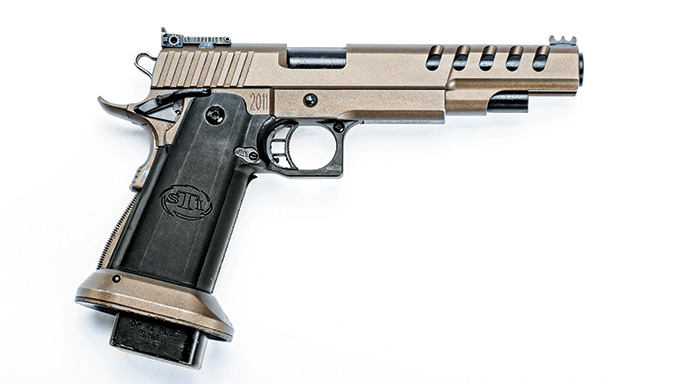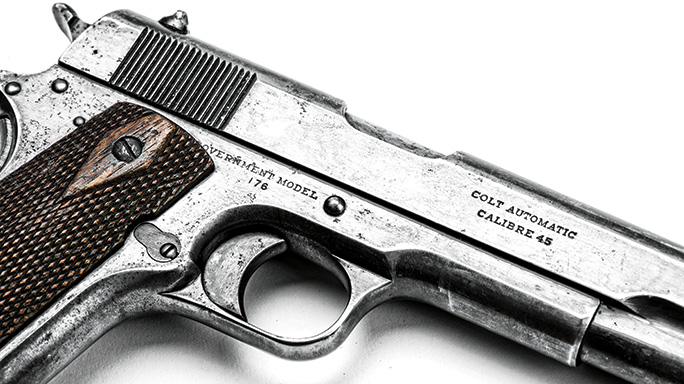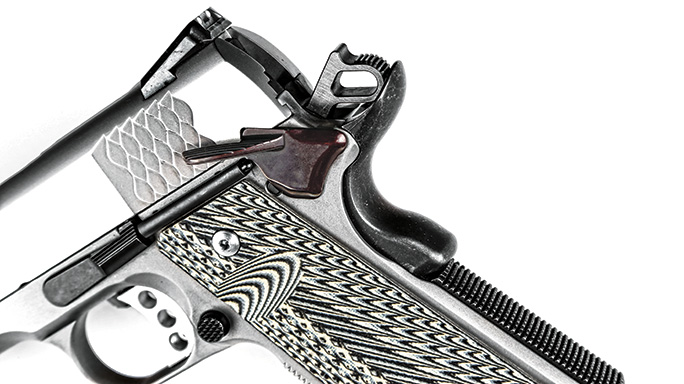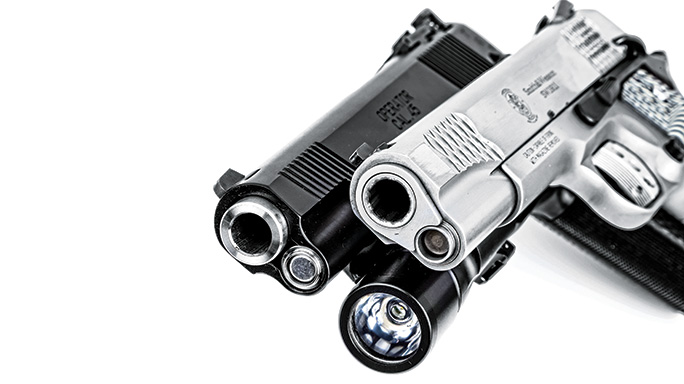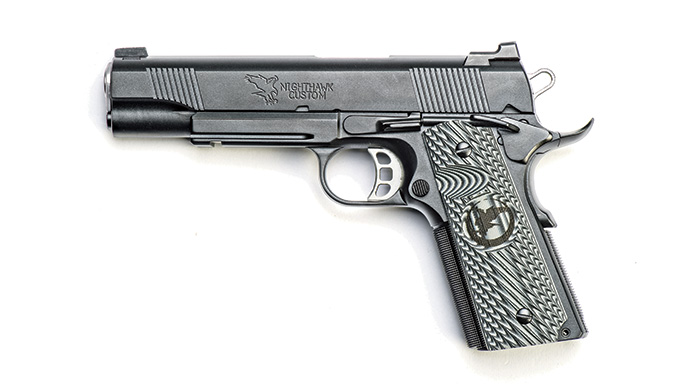The iconic 1911 pistol has been in continual use since the U.S. Army first adopted it over 100 years ago. It is a tangible piece of American history with a remarkable service history that spans from well before World War I to the current day. This accurate shooter has earned a legion of dedicated enthusiasts, and for good reason. Its century-old design has held its own over the years against all competitors in the handgun world.
- RELATED STORY: 21 Important Questions & Answers About the AK-47
There’s no one single reason to be a fan of the 1911. A lot of designs have challenged, trying to take the sidearm throne of Americans and shooting enthusiasts alike, but its story, characteristics and personality have kept the 1911 in our hearts and our holsters.
Here are 16 facts about the 1911 that you should know.
Advertisement — Continue Reading Below
1. Why is it called a “1911”?
The U.S. Army adopted the 1911 pistol, designed by legendary firearms inventor John Browning, on March 29, 1911. Because of this, it became known officially as the Model 1911 (M1911). Since then, there have been many variations of this pistol, each with varying monikers. The term “1911” is now used as a blanket designator for nearly all 1911-type pistols.
2. Who uses the 1911?
Advertisement — Continue Reading Below
Maybe it’s better to ask who doesn’t use the 1911? Several units in the United States military as well as law enforcement agencies still employ the 1911 as their sidearm of choice. Most notably, MARSOC Marines used 1911s, with some examples dating back to World War II. Shooting athletes in both IDPA and IPSC have been dominating both disciplines with the 1911 and its double-stack variants to win championships for decades now. Model 1911s are also popular choices for home and personal defense.
3. Is the 1911 an outdated design?
Simply put, no. Most companies and designers have referenced John Browning, the inventor of the 1911, and his designs as the foundation for a number of firearms today. Their designs differ, but the concepts and design points that John Browning came up with while designing this iconic handgun over 100 years ago still hold true today.
Advertisement — Continue Reading Below
4. Is the 1911 too heavy and big to use?
Weight can be a concern for the novice 1911 user. The pistol, with its slim grip, narrow slide profile and heft, has allowed many smaller-statured shooters to pick the 1911 as their sidearm of choice. There are also lightweight and compact versions of the 1911. We recommend that if you plan to carry such a pistol, you choose a stiff belt and a good weight-displacing holster: It will make carrying a more agreeable experience.
5. I’m new to shooting. Should I get a 1911?
Advertisement — Continue Reading Below
The 1911 is a gun that will reward someone who employs the fundamentals of marksmanship and firearms safety. With quality training, the 1911 is a great option for a beginner.
6. There are so many choices. Which 1911 should I buy?
There’s a different flavor of 1911 for every type of person. Some pieces are highly collectible due to their history. There are examples for competition that feature performance-enhancing parts. There are lightweight and compact models for concealed-carry options. There are also showpieces that highlight the decorative accents and attributes of the pistol’s form. But for someone new to the 1911 design, we recommend buying a 1911 from a reputable company with a long history of manufacturing 1911s and a good warranty.
Advertisement — Continue Reading Below
7. What’s the difference between Government, Commander and Officer frames?
They represent three common sizes for 1911s. The Government and Commander share a full-size frame and grip. The Government uses a 5-inch barrel with a full-length slide. The Commander traditionally has a 4.25-inch barrel, but manufacturers’ designs vary in length from 4 to 4.25 inches. The Officer is the smallest of the three common 1911 sizes, using a shorter 3-inch barrel
and shortened frame.
8. 1911s are commonly chambered in .45 ACP. Do other caliber for the 1911 exist?
Advertisement — Continue Reading Below
Due to the 1911’s long exposure to the competition-shooting community, caliber choices in the 1911 are plentiful. The most common caliber for the 1911 is the .45 ACP; however, one can pick up almost any modern caliber—9mm and .40 S&W are commonly seen, for example. For the adventurous, even rarer cartridges like the .38 Super, 10mm Auto and 9x25mm are offered.
9. What makes the 1911’s trigger so popular?
The 1911’s trigger is crisp and short. The trigger’s design is a single-action type, which is unlike most self-defense pistol designs today that have triggers connected to several tasks ranging from cocking the firing pin system, releasing firing pin safeties or disengaging a trigger safety. In contrast, the 1911 trigger has one job—to release the hammer. The 1911 uses a trigger that slides backwards in a linear pull instead of relying on a series of complicated parts, giving it one of the most consistent trigger pulls on the market.
Advertisement — Continue Reading Below
10. Series 70? Series 80? What are the differences between these two systems?
There are three notable firing pin safety systems for 1911s you should be aware of when selecting a 1911. All three are proven designs, and it’s up to the end user to decide which has the most merit. First off, there is the Swartz firing pin block: When you depress the grip safety, a plunger unblocks the firing pin safety. The second, the “Series 80,” often criticized as being detrimental to the 1911’s trigger, has levers that attach to the trigger to disengage the firing pin safety. Finally, there’s the “Series 70,” or the “pre 80,” which has no firing pin safety. To address this issue, modern manufacturers usually employ lightweight titanium firing pins and heavy firing pin springs to prevent the firing pin from traveling forward with enough energy to set off a round unintentionally.
11. What is a 2011?
Advertisement — Continue Reading Below
The 2011 is a popular choice in the competition-shooting community. It’s essentially an example of a 1911 that uses a widened grip frame for double-stack magazines. This allows users to almost double their magazine capacities with only a slight increase in overall grip size.
12. Is it safe to carry a 1911 “cocked and locked”?
Contrary to popular belief, carrying a gun in this fashion is an extremely safe method of carrying a 1911 pistol. As long as the gun has been maintained well and the user has been properly trained, there should be no major concern over the condition of carry when compared to other pistol designs. The 1911 actually employs two very intuitive mechanical safeties: the manual thumb safety and the grip safety, which requires the user to use proper handling form to allow the firearm to discharge.
13. What is the difference between “GI” half recoil rods and full-length recoil rods?
Under the barrel of the 1911, there can be two types of recoil rod systems. The first is the full-length recoil rod, which uses a full-length guide rod from the barrel lug to the front of the frame to help align the recoil spring and slide assembly along the frame during fire. The second system is the “GI” half recoil rod system, which uses a small cap, a shortened recoil rod and a barrel-nut bushing to capture the recoil spring during fire. The full recoil rod claims to add stability and accuracy. The “GI” recoil rod is field-strippable without the aid of tools. This is one of two hotly debated items among 1911 owners. For every six who like one system, you’ll find half a dozen who don’t.
14. What is the difference between a bull barrel and a standard barrel?
This is the other hotly debated topic. Many companies will use a tapered bull barrel system to help the shooting dynamics of the 1911 when lightened or shortened. This is seen typically in Commander and Officer configurations. The barrel bushing is removed from this design, which which some claim helps with accuracy unless the bushing is fitted.
15. Are all 1911s dimensionally the same?
When looking for parts, there’s never any way to be absolutely certain they will fit your 1911. The rights to John Browning’s design have long been available to the public, but the innovations and modifications to it have created a market full of different specifications in regards to the 1911. However, there are some general rules. Novak sight cuts are the most popular style of dovetail-machined cuts for the 1911. Model 1911 grips generally share the same specs, but thin grips require shorter screws. Commander-style holsters are generally made for 4.25-inch barrels so 4-inch guns will still fit.
16. What’s the difference between the $400 models and the $3,000 models? Are they worth that much?
There’s a lot of work when it comes to creating a 1911. Most 1911s begin their life in a similar fashion as a forged frame, but many components and processes create the price discrepancy between models. Sometimes cost-effective methods like MIM (metal injection molding) and assembly line productions are employed for guns to bring down the price point. Other times, the value of craftsmanship by a gunsmith who personally inspects and mates each part creates a lofty price tag. The best thing to do is define the role your 1911 will fill and make a decision from there.
